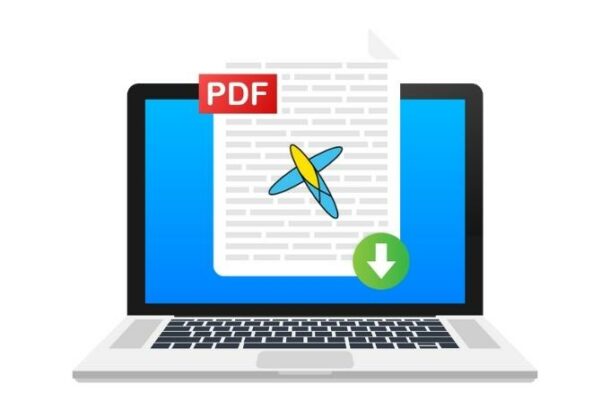Product Backlog Refinement

Many a time we have come across a situation where team members complain that stories were not ready before the sprint.
At times, people complain that they are seeing the story for the very first time. Does this sound familiar?
Another common complaint I have heard is that the Acceptance Criteria is not fully developed.
How can we address these issues?
It is very simple. All the stakeholders of the project should agree upon a cadence where the team meets every single week to go through the product backlog and refine the same.
When is the best time to refine the Product Backlog?
- Ideally once in a week and time box it for 1 hour. In a sprint of 2 weeks, at least teams should have met twice.
What is the Purpose of this meeting?
- Plan for the next Iteration (sprint)
- Refine, Prioritize the stories
- Further, develop acceptance criteria
- The team should have visibility of at least 3 Iterations
Who are the participants?
- It is owned and prioritized by the Product Owner
- Scrum Master, Product Owner, Development team (both developers and testers)
- Subject Matter Experts, Architects
What is the outcome of this meeting?
- Scrum Master facilitates the product backlog refinement meeting
- Product Owner picks up each story which would be part of the discussion to clarify any doubts and also to update Acceptance Criteria
- This helps the team to identify the dependencies between the teams
- Call out from technical architects if it is not technically viable to do right away in the upcoming Iteration
- Summarize the action items, decisions made and make sure this is visible to all the relevant stakeholders
The above should help in reducing the frustration during the Iteration Planning meeting and also the teams would get the sense of collaboration to set clear cut acceptance criteria.
Lean Agile Portfolio Practices Using Kanban

What is the purpose for us using ‘Kanban‘ for Portfolio management?
At senior executive levels, it is all about churning ideas each day for your product lines.
The portfolio backlog inputs can come from Sales and Marketing teams, End users, through customer interviews, adhering to compliance, product management teams, etc… These are nothing but strategic themes.
The idea of using Kanban is as follows:
- Pick an idea from the “To Do” to evaluate if it is feasible. Limit the number of ideas picked each week for evaluation purpose (WIP)
- Most importantly create visibility to all the key stakeholders
- The strategic themes
- Prioritize the ideas which are of high business value by ensuring we get inputs from all the key stakeholders
- Allocate lean budgets for each of the value streams
- Solution Architects inputs are most vital to know technical feasibility before prioritizing
- Easiness of maintaining a visualization board
- Continuous exploration feeds the Kanban “To Do” list
Done State
- Approved Epics becomes part of the Portfolio Backlog
It is better to have a cadence preferably to review once in 2 weeks to continuously evolve as a framework to get the most valued items delivered to customers on a fast track mode. This will also help in improving upon WIP limits
Agile Marketing Made Simple: Tips for Helping Your Marketing Team Work Smarter (Not Harder)

When it comes to selling, the common perception is that one needs to get into a transaction; a space of ‘give and take’ for remuneration. While this concept can be easily formalised in a business that sells products but it comes to a service, one needs to examine other aspects of the spectrum as well.
Marketing is a skill in effecting a sale. The potency of a marketing strategy or campaign is as powerful as the volume of sales it generates. If the process does not generate a return on the investment (ROI), it is simply a facet of idle creativity of no value. It is like a beautiful painting which people will appreciate but not venture to buy, and even if they did, will pay a price that will be far below its potential value.
Fortunately, Agile enables a mindset that goes beyond the realms of creative thinking and innovation. It focuses on building capacities in earning revenue. Everything you do in an Agile environment, if done right, will generate an ROI.
So how does that work? Here are some quick tips for better prospects at marketing:
Tip #1
Make a Promise to your Customer: It’s all about people in Agile. And customers are just that. Good people! Keeping a client-centric approach in your marketing strategy is the first step towards a smart plan. Get to know what the customer wants, and if he isn’t sure of what he wants…great…. create a want that he will benefit from! Make him aware of his wants and show him access to realise it. Making a promise to your clients and clearly defining it in words signifies the intent with which you are approaching the sale.
Tip #2
Be Interested, Not Interesting: Your marketing pitch should not be about how good or competent you are, but should be more on how involved are you in benefiting the customer in getting what he needs. A smart team will always have an approach of ‘being interested’ in a customer than being ‘interesting to them’. It’s all about collaborating at the human level.
Tip #3
Listen with Intention: Essence of Agile is in the power of Listening. Listen to what the customer is asking for not from assumptions and prevailing perceptions but his world. Listen from his stance, do not allow your views colour what he is seeking. When engaging with a client, be intentional in the listening department!
Tip #4
Keep the Agenda out of the Context: Good teams rehearse a pitch before the client meeting, effective teams, create one right at that moment. Preconceived sales pitches and ideas are generated from a single dimension, which becomes the defacto agenda. The customer’s perception is not factored in and hence the sales are driven by the agenda. Keep the agenda out of the Context, let it be in content though. The context should be to give a great customer experience which he will want to engage in more and more. That should be the Genesis of the pitch, not the agenda to ‘make a sale’.
Tip #5
Do not look at the Score Board: Players in a game never look at the scoreboard. We all know what happens to a player who is more bothered looking at the score than his performance in the field. Keep playing the game unmindful of what the score is. Marketing is not about achieving sales figures and targets, it is about taking actions commensurate to the overall strategy of the business.
We at Leadership Tribe are purely customer-driven. We place ourselves last when it comes to offering our product and in the marketing pipeline. We know, our success is when our customers succeed, and that is our promise. We do not sell a service, instead, we are in the business of enabling technology. A technology to achieve high performance and excellence, which when effectively implemented, shall result in outcomes best suited to our customers. Join us in our Business Agility Program to understand the complete spectrum of Agile Marketing and Implementation and in the process make new connections and collaborations with like-minded individuals and organisations.
Is Your Business Goal Oriented or Purpose Oriented

Organisations are vibrant systems. Systems dependent on human relationships and resources. These systems need to be supported by clearly articulated intentions, working structures and adaptive strategies. The most common method to fix the success of a business is to declare goals and then deploy resources to achieve them. Goals help teams and individuals set clear targets and a sense of direction. A direction towards which they hope to fulfil objectives and derive mission outcomes. However, the question that arises is, are goals significant in the overall growth of the company? Do they support business needs?
To answer this, let us examine why goals are set. The common intentions for goal setting are:
- Derive a clear ‘score’ that needs to be achieved within a definite timeline.
- To enable effective communication of intended output for the business
- To facilitate various systems, converge on a common value outcome
- To ensure the business thrives on a clear metric of measurement
Another approach to achieve business objectives is to be purpose-driven. A purpose can be defined as the reason why an entity exists or activity is done. Organisations should clearly articulate the purpose for which the business exists and more importantly, what does that purpose fulfil. Stating a clear purpose may not be that simple for most enterprises have no clarity on the ‘Why’ of their existence. As complex as it may seem, being purposeful is actually a simple and effective way of being successful.
A purpose-driven organization will endure more than a goal-oriented one due to the following attributes:
- A purpose demands a foundation based on belief and values. Unlike goals, which are only directional and ‘action-centric’, a purpose serves as a moral compass that calls for self-introspection and needs to be calibrated regularly.
- The purpose is complimentary with commitment. If an organization has a clear purpose of its intentions, commitment automatically gets generated. Purpose begets commitment as a by-product. Goals, on the other hand, need the commitment to be created and sought for. When one strives for a goal, one needs to work on commitment also.
- Purpose-driven actions are more overarching. They encompass the bigger picture of the systemic process. Purpose also instils a sense of intrinsic responsibility and accountability. Goals are often more narrowed down. They serve to achieve specific, defined and clear outcomes, however, ownership for achieving them are often blurred and left to translation.
- Purpose creates fulfilment. Goals create satisfaction.
In the market today, it is important for companies to be purpose-driven. They need to clearly define WHY they need to exist. To get this, the most suitable and effective medium to adopt is an Agile mindset.
Agile inherently sows the seeds of purpose in each of the activities that occur in the organization. Agile, in its very design, encourages purpose-driven activities. In an Agile environment, goals are not important, the purpose of working is. Goals, if at all are set only to serve as a means to fulfil the committed purpose. The Agile mindset does not get influenced by keeping individual scores but focuses more on encouraging common purposes. Purpose orientation defines the WHY of the business, and this is central to a well-designed Agile program.
Understanding Agile and implementation of a well-designed Agile transformation process create purpose-driven values outcome. Instead of just being goal-driven, the enterprise exists with a purpose. A purpose which fosters human relationships and encourages inclusivity. At Leadership Tribe, our Agile implementation strategy are purpose-driven than goal-driven. We strive to find a purpose for the organization. A purpose on which the organization can enunciate its operational strategies. We believe, that mere goal setting limits us in the transformation process. Goals just create expectations and actions that get directional. We believe in Purpose. The reason to exist. We serve to support organizations to be fulfilled in their success. A fulfilment that comes from a deep sense of purpose.

